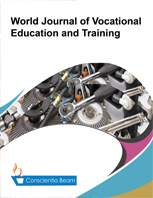Research on applying flipped classroom and digital learning to high school programming courses
DOI:
https://doi.org/10.18488/119.v6i1.3800Abstract
The objective of this study is to investigate how flipped classrooms affect education in high school programs. Although many studies have pointed out that flipped teaching can improve the learning experience and can evaluate learning effectiveness through classroom activities, it may also make it difficult for teachers to grasp students' learning status and behavior, and flipped teaching is used in high school programming course recognition and satisfaction Empirical research is somewhat lacking. Accordingly, this research applies the flipped teaching method to high school programming courses and gathers data on students who watch instructional videos. Through research data analysis, it is found that 51% to 93% of students will actively watch the designated instructional videos before class, and some students will repeat Watch the video (1.3 to 1.8 times), and most students will watch it again during the group project design. In addition, most students have the habit of adjusting the video speed to self-regulate their learning (1.4 to 1.5 times). The questionnaire results indicate that most students prefer the flipped classroom learning method (3.48 to 4.01 points). Through this study, we understand the students' mode of digital learning in programming courses, and we know that flipped classrooms can improve the learning satisfaction of programming courses.

